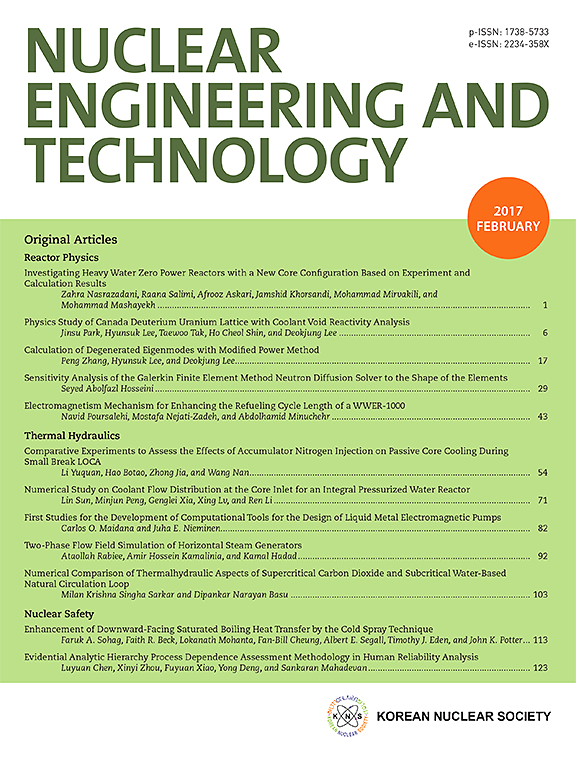Effect of non-uniform distribution of radioactivity in human body on measurements using HPGe detector based scanning bed whole body counter
IF 2.6
3区 工程技术
Q1 NUCLEAR SCIENCE & TECHNOLOGY
引用次数: 0
Abstract
In-vivo monitoring of radiation workers for high energy photon emitters is carried out using whole body counters. These are calibrated using standard radioactive sources uniformly distributed in BOMAB phantom. In the case of inhalation intake of Type S compounds, radioactivity is retained in lungs for a long time resulting in non-uniform distribution. In this paper, the effect of non-uniform distribution of activity in human body is studied on the direct measurement using shadow shield bed whole body counter (SSBWBC) with BOMAB and LLNL phantoms. First, the system was calibrated with known amount of 133Ba, 137Cs, 60Co and 40K uniformly distributed in water filled BOMAB phantom. Then, the system was calibrated with known amount of 152Eu and 241Am uniformly distributed in the lungs of LLNL phantom. The multiple gamma energies of radionuclides were used to determine the counting efficiencies for uniformly distributed activity in whole body as well as in the lungs. The study shows when uniform distribution of radionuclides in the whole body is assumed but activity is confined in the lungs only, measured activity is overestimated by 15 to 20 %. This results in similar overestimation in intake and CED.
人体放射性不均匀分布对基于HPGe探测器的扫描床全身计数器测量的影响
使用全身计数器对辐射工作人员进行高能光子发射器的体内监测。这些是使用均匀分布在BOMAB模型中的标准放射源校准的。在吸入S型化合物的情况下,放射性在肺部长时间保留,导致分布不均匀。本文研究了人体活动不均匀分布对使用BOMAB和LLNL模型的遮荫床全身计数器(SSBWBC)直接测量的影响。首先,将已知数量的133Ba、137Cs、60Co和40K均匀分布在充满水的BOMAB模体中,对系统进行校准。然后,用已知量的152Eu和241Am均匀分布在LLNL假体肺中,对系统进行校准。放射性核素的多重γ能量被用来确定在全身和肺部均匀分布的活动的计数效率。该研究表明,如果假定放射性核素在全身均匀分布,但放射性活动仅局限于肺部,则测量到的放射性活动被高估了15%至20%。这导致了对摄入量和CED的类似高估。
本文章由计算机程序翻译,如有差异,请以英文原文为准。
求助全文
约1分钟内获得全文
求助全文
来源期刊

Nuclear Engineering and Technology
工程技术-核科学技术
CiteScore
4.80
自引率
7.40%
发文量
431
审稿时长
3.5 months
期刊介绍:
Nuclear Engineering and Technology (NET), an international journal of the Korean Nuclear Society (KNS), publishes peer-reviewed papers on original research, ideas and developments in all areas of the field of nuclear science and technology. NET bimonthly publishes original articles, reviews, and technical notes. The journal is listed in the Science Citation Index Expanded (SCIE) of Thomson Reuters.
NET covers all fields for peaceful utilization of nuclear energy and radiation as follows:
1) Reactor Physics
2) Thermal Hydraulics
3) Nuclear Safety
4) Nuclear I&C
5) Nuclear Physics, Fusion, and Laser Technology
6) Nuclear Fuel Cycle and Radioactive Waste Management
7) Nuclear Fuel and Reactor Materials
8) Radiation Application
9) Radiation Protection
10) Nuclear Structural Analysis and Plant Management & Maintenance
11) Nuclear Policy, Economics, and Human Resource Development
 求助内容:
求助内容: 应助结果提醒方式:
应助结果提醒方式:


